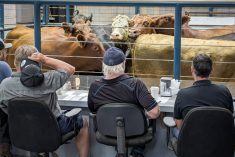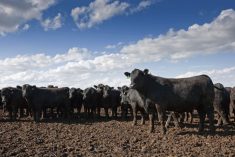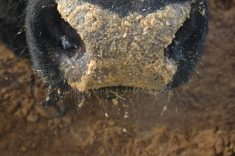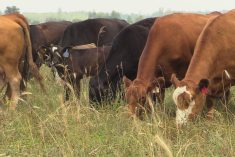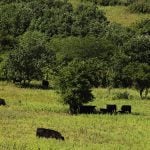Compared to last week, western Canadian yearlings over 800 lbs. jumped $4 to as much as $10 in some cases. Steers in the 700- to 800-lb. category appeared to be up $10-$12 while similar-weight heifers were up $8-$10. Calves under 700 lbs. were up $10-$20. The feeder market was hard to define in some cases. Smaller groups of stragglers or fleshier types were heavily discounted.
Strength in deferred live cattle futures, along with news of China’s agreement to resume barley imports from Australia, were the main factors driving the feeder market, especially for feeders under 700 lbs. Reported values were quite variable this past week. There were larger groups of backgrounded cattle moving directly off farm to feedlot. Finishing operators will sometimes pay a minor premium on quality groups with controlled weight gain and health data. For calves, buyers are looking to secure ownership for fall yearlings. Grass cattle are expensive. Some cow-calf producers are resorting to buying heifers over 800 lbs. for grass programs. Alberta packers were buying fed cattle on a dressed basis in the range of $370-$375, up $7-$10 from last week. The fed market is leading the feeder complex.
Read Also
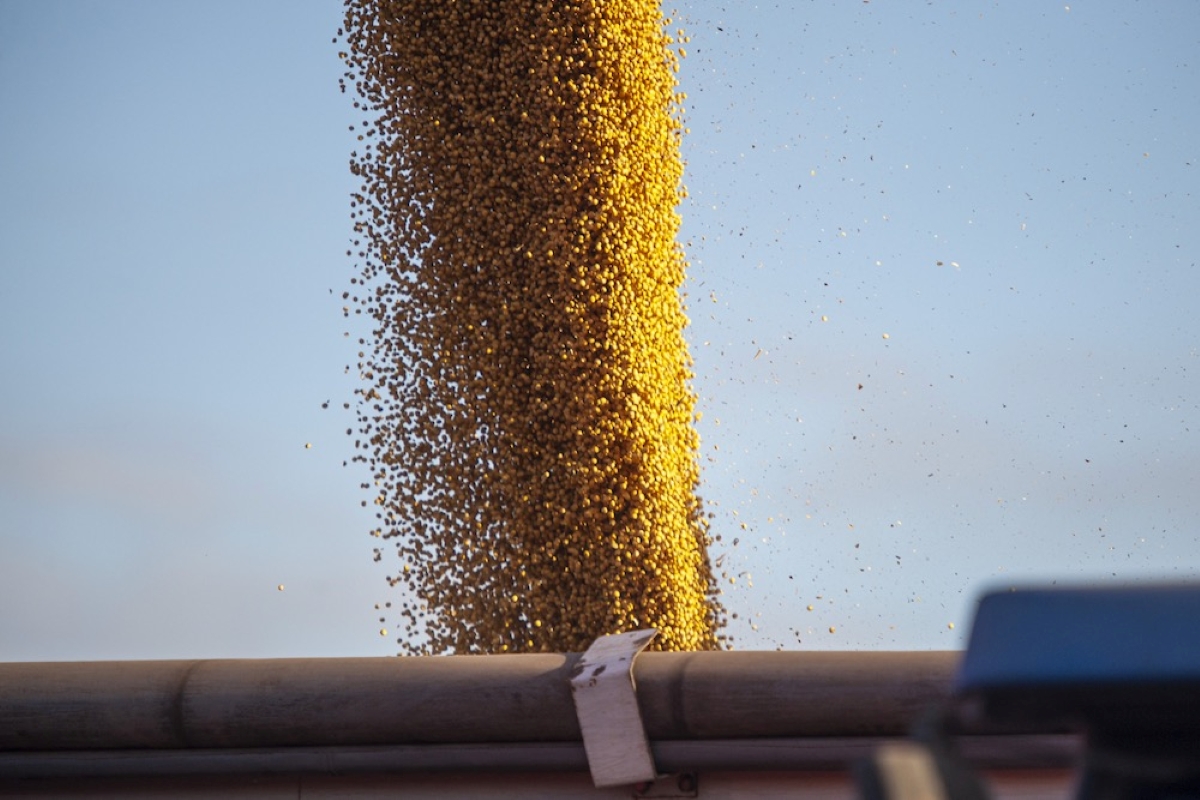
Brazil to reap record soy crop in 2025/2026, increase exports
Brazil’s Conab said the country will reap a record soybean crop of 177.6 million tons in the 2025/2026 harvest year, according to data released on Thursday.
The yearling market appeared to percolate higher throughout the week. Sales on Friday were $1-$3 higher than Tuesday. In central Alberta, Simmental-blended lower-flesh steers on light grain ration with full health data weighing 895 lbs. sold for $260. In the same region, Angus-blended heifers on light grain diet scaled at 865 lbs. dropped the gavel at $248. In central Saskatchewan, 950-lb. crossbred steers with medium to lower flesh were valued at $243 and similar-quality and -genetic 800-lb. steers were stopped at $280. Northwest of Winnipeg, Angus-based steers weighing 856 lbs. were quoted at $268 and red heifers carrying a lighter layer of butter averaging 825 lbs. silenced the crowd at $254.
Northeast of Calgary, the highest bid for Limousin-based steers averaging 750 lbs. was $295. North of Brandon, Charolais lower-flesh steers weighing 705 lbs. charted the board at $302.
In central Alberta, black weaned steers weighing 620 lbs. sold for $330 and Simmental-based steers weighing 540 lbs. sold for $340. In the same region, red heifers weighing 540 lbs. dropped the gavel at $310. In central Saskatchewan, black steers scaled at 610 lbs. touched buyers’ hearts at $320 and Charolais-based heifers averaging 545 lbs. were quoted at $318.
Australia and China have come to an agreement on barley trade. Canadian barley exports will be down sharply in the 2023-24 crop year. Traders are anticipating a burdensome barley supply in Western Canada this fall. Secondly, a later-seeded wheat crop is vulnerable to adverse weather. This has contributed to price strength on cattle that will have the bulk of their weight gains with new-crop feed grains. This comes on the heels of a record Brazilian corn crop and a four million-acre year-over-year increase in U.S. corn plantings. Calf prices in November have $30-$40 upside potential from current levels.
— Jerry Klassen is president and founder of Resilient Capital, specializing in proprietary commodity futures trading and market analysis. Jerry consults with feedlots on risk management and writes a weekly cattle market commentary. He can be reached at 204-504-8339 or via his website at ResilCapital.com.






